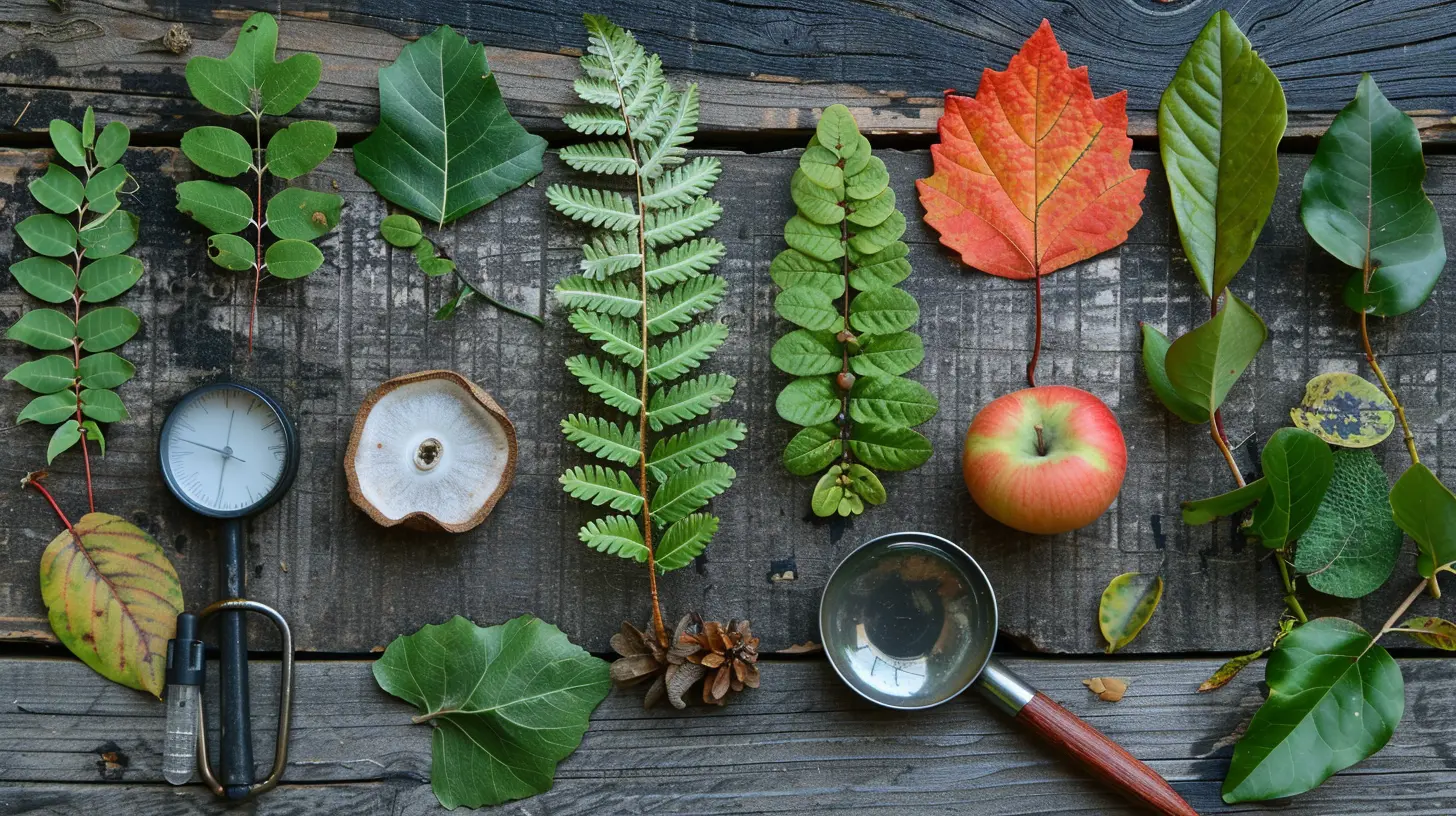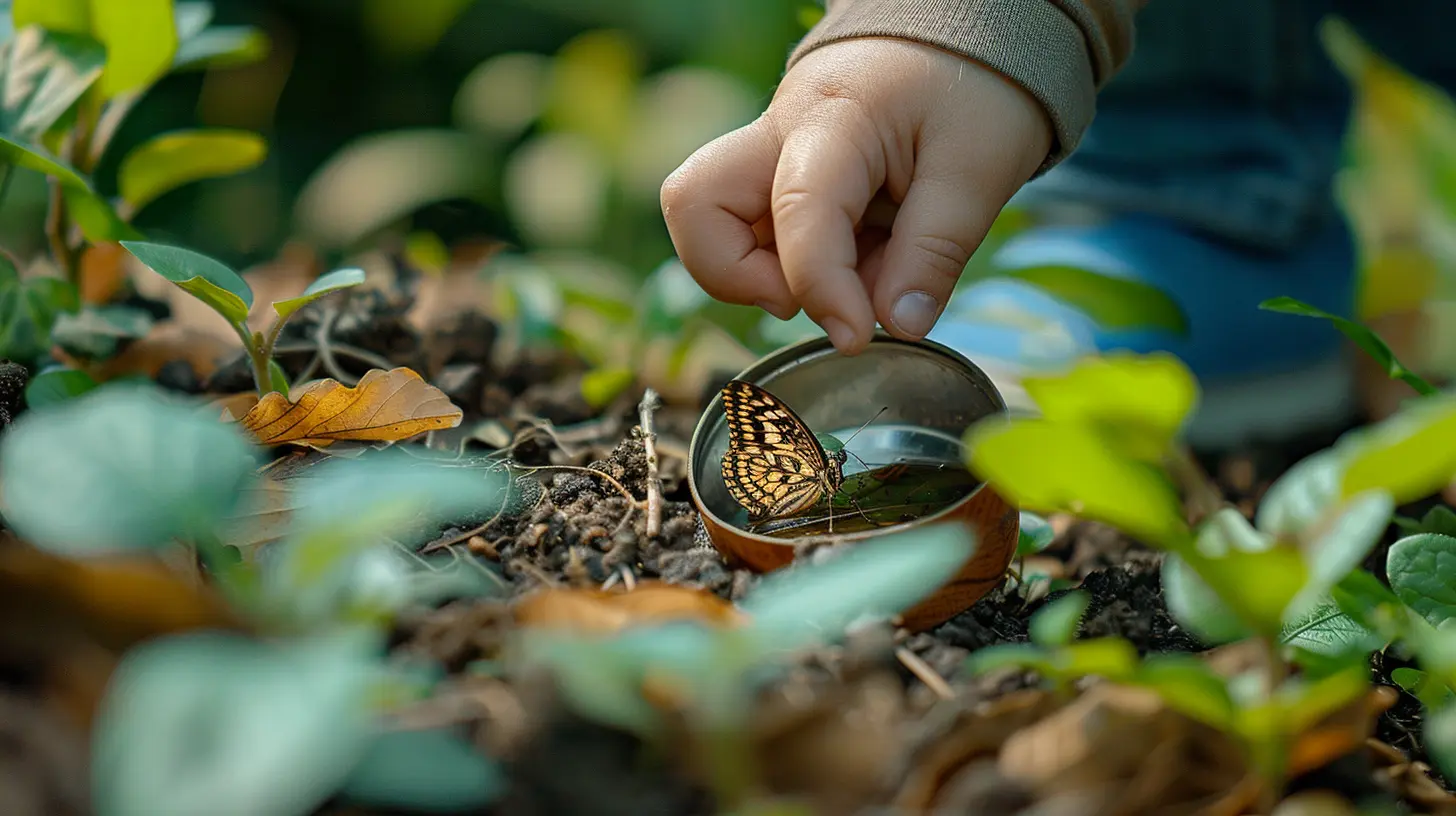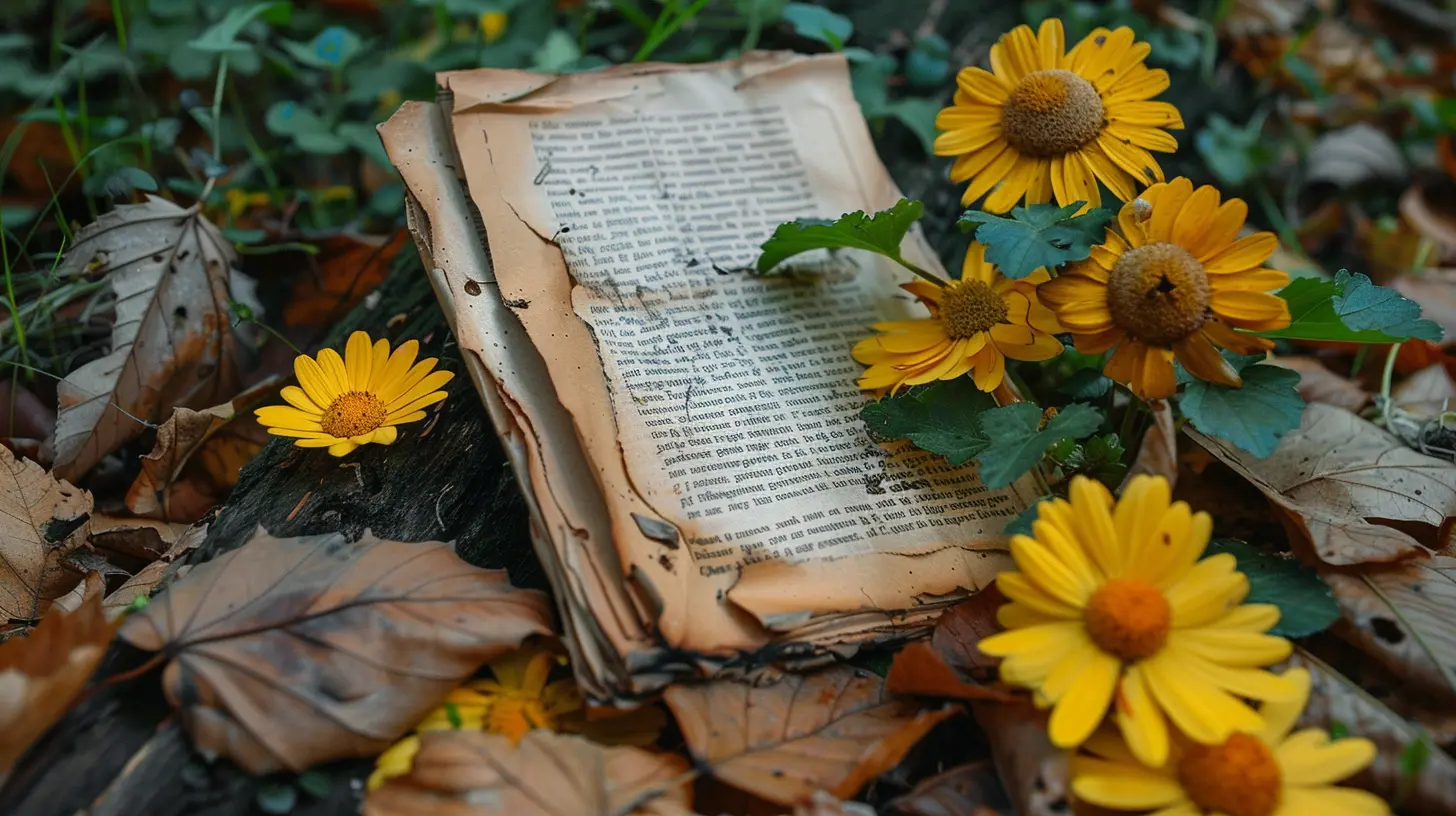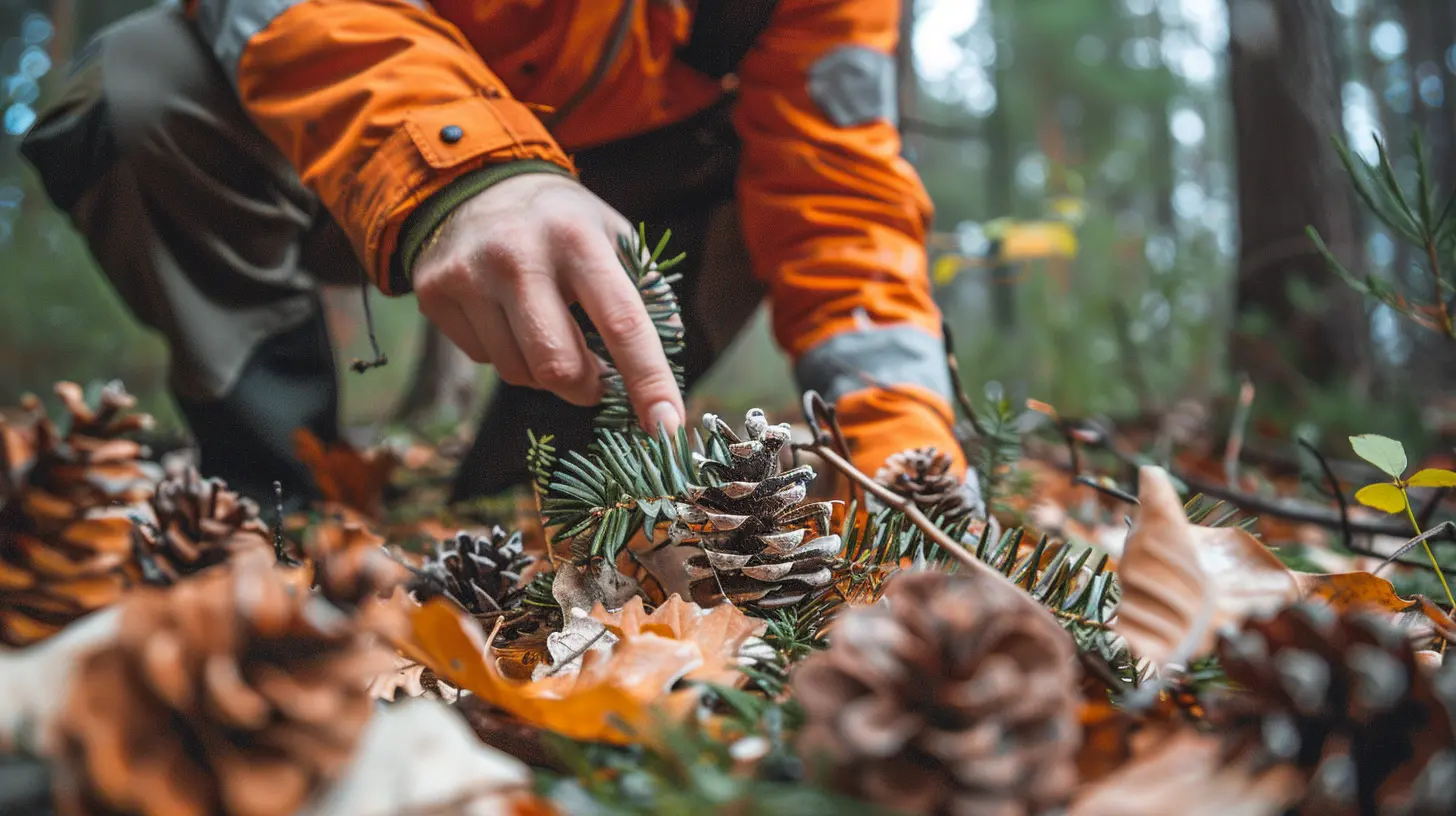Creating a DIY Nature Scavenger Hunt for Kids
9 August 2025
Let’s be honest—keeping kids entertained without a screen in front of them can sometimes feel like you’re trying to wrestle a raccoon hopped up on sugar. But here’s a magical idea that’ll get them moving, thinking, and giggling all at once: a DIY nature scavenger hunt.
Whether you’ve got a backyard the size of a postage stamp or access to a local park, this little adventure can turn any ordinary day into a National Geographic-worthy expedition (minus the wild animal chases).
So grab your granola bars, put on some comfy shoes, and let’s get our nature groove on!
Why a Nature Scavenger Hunt is the Ultimate Parenting Hack
You know those rare moments when the kids are fully entertained, not bickering, and—brace yourself—learning something? A nature scavenger hunt delivers all of that and tosses in some bonus fresh air too.Think of it like tricking your child into learning biology and mindfulness while they think they're just playing a game. Nature scavenger hunts are:
- 🧠 Educational (but don’t tell them that).
- 🏃♂️ Physical (hello, nap time afterwards!).
- 😃 Fun for all ages (even the grumpy preteens might crack a smile).
- 🎨 Fuel for creativity and storytelling.
Now let’s dive into the nuts and bolts of how you can create your own hunt, no printer or Pinterest-worthy skills required.
Step 1: Pick Your Playground
First things first—location, location, location. You don’t need a sprawling national park. Your backyard, a sidewalk stroll, or even your apartment balcony filled with a few potted plants can do the trick.Here are a few ideas:
- Backyard or Garden – Perfect for spotting bugs, birds, and twigs galore.
- Local Park – More variety equals more excitement.
- Nature Trail or Forest Path – For the slightly more adventurous.
- Beach or Lakefront – Sand, shells, driftwood, and watery wonders.
- Urban Safari – Yep, spotting weeds growing in sidewalk cracks counts too!
No matter where you go, nature is everywhere—you just need to look.
Step 2: Choose a Theme (Or Don’t, It’s Your Hunt!)
Here’s where things get creative. Do you want a traditional “find a feather” type of hunt? Or maybe something a little quirkier like “find something smaller than your thumb” or “something that smells delicious (no, not your snack)?”Popular Nature Hunt Themes:
- 🔎 Classic Nature Hunt – Leaves, rocks, feathers, flowers. You know the drill.
- 🐾 Bug & Critter Hunt – Ants, ladybugs, spiders, oh my!
- 🎨 Color Hunt – Find something red, blue, green, yellow, and so on.
- 🌿 Texture Hunt – Something rough, soft, bumpy, smooth.
- 📸 Photo Safari – Take pictures instead of collecting. Perfect if your kids are snap-happy.
- 🔤 Alphabet Hunt – Find something that starts with each letter (admittedly, X might be a stretch).
If you want bonus points, let the kids help pick the theme. You’ll be amazed at what their imaginations cook up—“a hunt for things that look like food but aren’t” is a personal favorite around here.
Step 3: Create the List (a.k.a. The Treasure Map)
Now it’s time for the official scavenging list. Keep it age-appropriate and adaptable. Tiny tots? Stick with colors, shapes, and big items. Older kids? Add riddles, clues, or even a time limit for a little extra spice.Sample DIY Nature Scavenger Hunt List for Ages 4–10:
- A leaf bigger than your hand
- Something that smells good
- A rock shaped like a heart
- A stick shaped like a letter
- Something fuzzy
- Two different kinds of bugs (alive or paintings of bugs on rocks count!)
- A flower with more than 5 petals
- Bark that feels like a potato chip (texture games are fun)
- Something you think is beautiful
- Something you can hear but not see (hello, birds and buzzing bees!)
Want to go high-tech lite? Snap photos of each item instead of collecting them—hello, instant slideshow later!
Step 4: Gather Your Tools (Optional but Cool)
Okay, you don’t need to be Bear Grylls out there with a full survival kit, but a few simple items can really level up the experience.Here’s what to pack in your scavenger bag:
- A small basket, paper bag, or old lunchbox for collecting treasures
- A magnifying glass (makes everything more exciting!)
- A notebook and crayons for sketching finds
- Camera or smartphone if you're doing a photo-based hunt
- A bottle of water and some snacks because... kids
- Sunscreen and bug spray (safety first, folks)
You can even print or draw a checklist and clip it to a clipboard if you’re feeling fancy.
Step 5: Set the Rules (a.k.a. Prevent the Chaos)
Before your scavenger stormtroopers charge the field, lay down a few house (or forest) rules. No one wants to explain to a park ranger why Junior is trying to bring home a turtle or dig up a tree.Sample Rules to Keep It Fun and Safe:
- Look, don’t touch (especially for bugs and berries)
- Stay on the trail or in sight
- No picking flowers unless it’s OK in that area
- Respect nature—leave it better than you found it
- Kindness counts: share and cheer each other on
You’re raising little eco-warriors, not mini hooligans.
Step 6: Hunt Time – Let the Wild (Yet Organized) Rumpus Begin!
Ready, set… GO! Let your kiddos roam and explore. Some might dash from item to item like headless chickens, others will crouch over pebbles for half an hour like tiny geologists.Let them lead, but keep it moving if things stall. Offer clues, ask questions, or pretend they’re on a spy mission. Seriously, toss in a British accent and say “Agent Leaf, your mission is to find a feather from a blue bird,” and watch the magic happen.
Take breaks, snap photos, and soak it all in. It’s not just about checking boxes—it’s about those “whoa, look at this!” moments.
Step 7: Celebrate Your Little Nature Explorers
The hunt’s over, but the fun doesn’t have to be. Bust out the snacks or have a little picnic using their scavenger treasures as table decorations.Here are a few fun post-hunt activities:
- Show and Tell – Let them pick their favorite find and tell a wild story about it.
- Craft Time – Glue leaves and twigs onto paper for nature art.
- Scrapbook Session – Print photos and paste items into a scavenger diary.
- Mini Science Lab – Use a magnifying glass to examine bugs and leaves.
- Treasure Ceremony – Give out silly awards (Most Muddy, Best Bug Spotter, etc.)
Tips for Keeping It Fresh
Kids are smart. Do the same hunt three times, and they’ll start quoting your clues back at you. Keep things exciting with these ideas:- Do it at different times of day—morning birds vs. twilight critters = whole new world.
- Switch seasons (fall scavenger hunts? Amazing).
- Invite friends or neighbors for a mini nature Olympics.
- Add challenges—“Find a leaf while hopping on one foot!”
When in Doubt… Wing It!
If all else fails and you forget the list, forget Rule #3, or forget even what day it is (been there), just go outside and start asking “I wonder if we can find...” questions. Kids are naturally curious, and if you lead with enthusiasm, they’ll follow you into any imaginary jungle, forest, or backyard safari.Remember: the goal isn’t perfection—it’s connection.
Final Thoughts
Parenting is hard, nature is awesome, and kids are basically tiny, energetic professors of joy. A simple DIY nature scavenger hunt lets you enjoy all three at once.So next time you hear, “I’m bored!”—grab your scavenger list, lace up some shoes, and head outside. Let squirrels be your guides, twigs be your tools, and curiosity be your compass.
And hey, if you accidentally learn the difference between oak and maple leaves along the way? That’s just bonus parenting points.
all images in this post were generated using AI tools
Category:
Outdoor ActivitiesAuthor:

Zelda Gill
Discussion
rate this article
1 comments
Ulysses Warner
What a fantastic idea! Can't wait to try this with my kids!
August 18, 2025 at 4:41 PM

Zelda Gill
Thank you! I hope you and your kids have a wonderful time! Enjoy the adventure! 🌿✨


